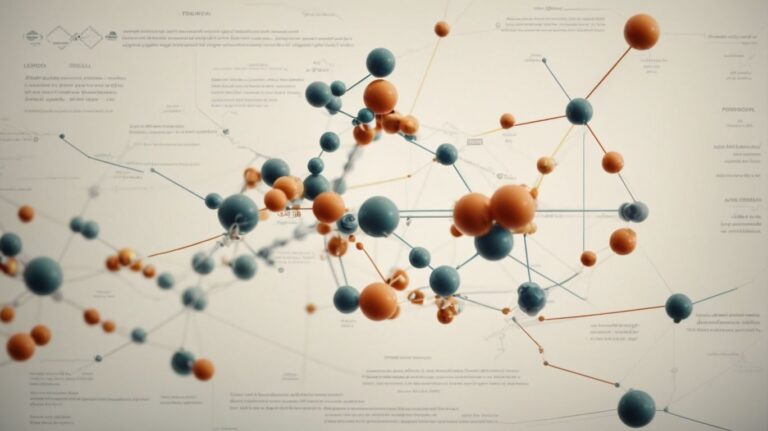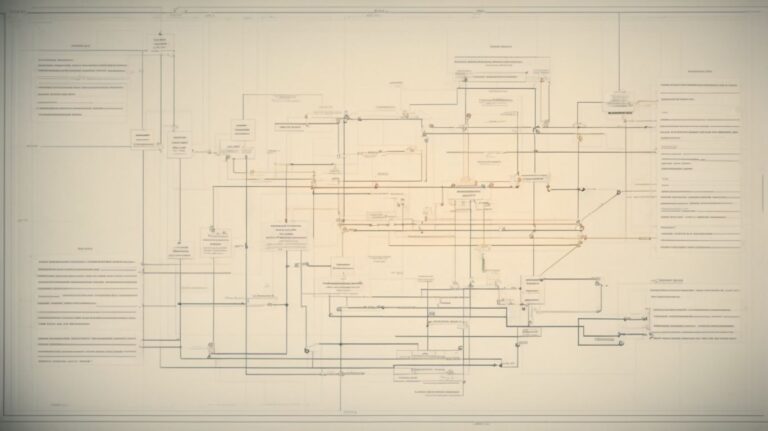Curious about the concept of Instinct Theory in AP Psychology? This article dives into the basic principles, development, key contributors, and criticisms of this theory. Explore the main concepts such as instincts, fixed action patterns, and evolutionary basis.
Discover how Instinct Theory is applied in animal behavior studies and understanding human behavior. Real-life examples like maternal instinct and fight or flight response will be discussed.
Compare Instinct Theory to other theories in AP Psychology including behaviorism, psychoanalysis, and humanistic psychology.
Contents
- 1 What Is Instinct Theory?
- 2 How Did Instinct Theory Develop in AP Psychology?
- 3 What Are the Main Concepts of Instinct Theory?
- 4 How Is Instinct Theory Applied in AP Psychology?
- 5 What Are the Real-life Examples of Instinct Theory?
- 6 How Does Instinct Theory Compare to Other Theories in AP Psychology?
- 7 Frequently Asked Questions
- 7.1 What is instinct theory in AP Psychology?
- 7.2 Who developed instinct theory?
- 7.3 What are examples of instincts according to instinct theory?
- 7.4 How does instinct theory differ from other psychological theories?
- 7.5 Is instinct theory still relevant in modern psychology?
- 7.6 Are instincts the only factors that drive behavior according to instinct theory?
What Is Instinct Theory?
Instinct theory in psychology explores the innate drivers behind behavior and motivation.
It posits that humans and animals are born with predetermined biological tendencies that guide their actions and decisions. These instincts are seen as evolutionary adaptations that have developed over time to ensure survival and reproduction. Understanding instinct theory provides valuable insights into why individuals exhibit certain behaviors without explicit learning or conditioning.
Instincts such as hunger, thirst, and self-preservation are core components of this theory, shedding light on the natural impulses that drive human actions. While modern psychology has moved towards more complex theories like drive reduction theory and self-determination theory, instinct theory still plays a crucial role in explaining fundamental human behaviors.
What Are the Basic Principles of Instinct Theory?
The basic principles of instinct theory revolve around the idea that needs and instincts are fundamental drivers of behavior in organisms.
Survival instincts, such as the instinct to find food, reproduce, or seek shelter, play a crucial role in ensuring the survival of individuals and species. These innate impulses are deeply ingrained within the genetic makeup of various organisms, guiding their actions in a way that promotes their chances of living and reproducing successfully. Instincts are often seen as automatic responses to environmental cues, helping organisms adapt and thrive in their habitats by fulfilling their basic needs effectively.
How Did Instinct Theory Develop in AP Psychology?
Instinct theory has evolved in the field of AP Psychology, drawing insights from behaviorism and evolutionary biology.
Initially proposed by psychologist William James in the late 19th century, instinct theory suggests that behaviors can be driven by innate biological factors rather than learned experiences. This concept gained traction through the works of theorists such as Konrad Lorenz and Nikolaas Tinbergen, who explored how animal behaviors could be shaped by evolution. The intersection of instinct theory with behaviorism, pioneered by John B. Watson, emphasized observable actions and environmental stimuli’s role in shaping behavior. This integration highlighted the complex interplay between genetic predispositions and environmental influences on behavior, bridging the gap between nature and nurture in psychological research.
Who Are the Key Contributors to Instinct Theory?
Prominent researchers such as Kendra Cherry and Maslow have contributed significantly to instinct theory with Maslow’s Hierarchy of Needs.
Instinct theory, a psychological approach, delves into the innate biological forces that drive human behavior. Kendra Cherry, a respected psychologist, emphasized the role of instincts in shaping human actions.
Maslow, renowned for his work on human motivation, proposed the hierarchy of needs theory, suggesting that individuals are driven by a progression of needs ranging from basic physiological requirements to self-actualization. This theory outlines how individuals strive for personal growth and fulfillment.
Cherry’s research expanded the understanding of instinctual behavior, while Maslow’s concepts revolutionized the field by highlighting the complex interplay between instinctual impulses and higher cognitive processes. By integrating these perspectives, researchers continue to explore the intricate nature of human instincts and motivations.
What Are the Criticisms of Instinct Theory?
Critics of instinct theory often point to the oversimplification of complex behaviors and the neglect of psychological factors in shaping behavior.
These critics argue that reducing behavior solely to instincts fails to account for the intricate interplay of internal mental processes, past experiences, and societal influences that shape human actions. While instinct theory offers a simplistic explanation for behavior based on innate biological drives, it tends to overlook the impact of individual differences, environmental stimuli, and cognitive processes that play crucial roles in determining how individuals respond to various situations.
What Are the Main Concepts of Instinct Theory?
The main concepts of instinct theory encompass the arousal levels, drive theory, and instinctual behaviors that motivate behavior.
In instinct theory, arousal levels play a crucial role in driving behavior by influencing an individual’s energy and readiness to act. When arousal levels are too low, an individual may lack motivation and engagement. On the other hand, excessive arousal can lead to overwhelming stress or anxiety, impacting behavior negatively.
Drive theory, another fundamental aspect of instinct theory, suggests that individuals are motivated to maintain a state of physiological balance, striving to reduce internal tension caused by unmet needs. This drive to restore equilibrium directs behavior towards satisfying those needs.
Instinctual behaviors, deeply-rooted in evolutionary history, are automatic and involuntary responses that are essential for survival and reproduction. These behaviors are innate and instinctively guide individuals to certain actions without the need for learning or conscious decision-making.
Instincts
Instincts in instinct theory are primal responses aimed at ensuring survival and are often observed as reflexes in organisms.
In the animal kingdom, instincts play a crucial role in dictating and informing behaviors necessary for survival. These innate responses are hardwired in an organism’s genetic makeup and are triggered by specific stimuli in the environment.
Survival instincts, such as the fight-or-flight response, demonstrate how instinctual behaviors can override conscious thought in times of danger, allowing for quick and automatic reactions to potential threats. Reflex behaviors, like pulling your hand away from a hot surface without thinking, are prime examples of how instincts manifest in daily life.
Fixed Action Patterns
Fixed action patterns in instinct theory are innate sequences of behaviors triggered by specific stimuli and have a biological basis.
These response patterns are observed across various species and are believed to be genetically hardwired into their biological makeup. The activation of fixed action patterns is automatic and doesn’t require learning or prior experience, showcasing the deep-rooted nature of these behaviors. Researchers suggest that these instinctual responses evolved over time to enhance survival and reproduction, making them crucial for the survival of a species.
Evolutionary Basis
The evolutionary basis of instinct theory suggests that behaviors promoting survival have been naturally selected over time.
Survival instincts are deeply ingrained mechanisms that have developed over millions of years of evolution to ensure the continuation of species. These innate behaviors are encoded in the genetic makeup of individuals and are crucial for adapting to environmental challenges.
For example, the fight-or-flight response is a classic instinctual reaction that helps organisms respond quickly to perceived threats. Through the process of natural selection, traits that contribute to survival and reproduction are passed down to future generations, enhancing the fitness of the species as a whole.
How Is Instinct Theory Applied in AP Psychology?
Instinct theory finds applications in AP Psychology through frameworks like the Yerkes-Dodson law, which relates arousal levels to performance based on stimuli and rewards.
One of the key aspects of the Yerkes-Dodson law is its emphasis on the inverted U-shaped relationship between arousal and performance. This means that performance initially improves with increasing arousal, but only up to a certain point. Beyond that optimal level of arousal, performance starts to decline. This fundamental concept helps psychologists understand how individuals react to different levels of stimulation.
The Yerkes-Dodson law highlights the influence of motivational stimuli on performance outcomes. It suggests that moderate arousal levels are ideal for tasks that require focus and attention, while more complex or cognitively demanding tasks may benefit from lower arousal levels.
In Animal Behavior Studies
Instinct theory is instrumental in studying animal behaviors, particularly in understanding how innate instincts drive responses to survival stimuli.
This theory suggests that animals are born with a set of behaviors that help them survive in their environment without the need for prior learning. Instincts such as hunting, mating, and self-defense have evolved over generations, shaping the way animals respond to various stimuli.
For example, the flight response in prey animals when faced with a predator is a classic demonstration of how innate instincts prime them to react swiftly to potential danger. Such behaviors are crucial for the survival of these species in the wild.
In Understanding Human Behavior
Instinct theory aids in deciphering human behaviors by highlighting the social and survival instincts that underpin many actions.
From an evolutionary standpoint, social instincts have been crucial for human development. These instincts encompass behaviors such as cooperation, empathy, and altruism, all of which are essential for fostering relationships and building societies.
On the other hand, survival instincts tap into our innate drive to ensure our physical well-being and safety. This can manifest in behaviors like fight-or-flight responses in threatening situations or seeking food and shelter to ensure survival.
By understanding the interplay between these two types of instincts, researchers gain valuable insights into why humans behave the way they do in various social contexts. While social instincts drive us towards connection and group cohesion, survival instincts prompt us to protect ourselves and secure necessary resources for survival.
What Are the Real-life Examples of Instinct Theory?
Real-life instances that align with instinct theory include the maternal instinct, fight or flight response, and nest-building behaviors observed in birds.
Maternal instincts are profound examples of instinct theory at work, as mothers across species instinctively protect and care for their young. For instance, a mother bear showing aggressive behavior to defend her cubs or a human mother waking up at the slightest sound of her baby crying showcase this powerful natural impulse.
On the other hand, the fight or flight response demonstrates how individuals instinctively react to perceived threats. This survival mechanism can be seen when a person either confronts a danger head-on or opts to flee to safety in a risky situation.
Bird nest-building behaviors are fascinating demonstrations of instinct in action. From intricate designs to meticulous construction, birds instinctively know how to create nests suitable for incubating eggs and raising their young.
Maternal Instinct
The maternal instinct, a prime example of instinct theory, drives caregivers to protect and nurture offspring for their survival.
Maternal instinct is deeply ingrained in many species, with female individuals exhibiting remarkable behaviors to ensure the well-being of their young. This instinct is an essential component in perpetuating the species, as it guarantees the continuity of generations.
Maternal care encompasses a range of actions, from providing food and shelter to teaching crucial survival skills. The profound bond between a mother and her offspring is a powerful force that transcends mere biology, shaping societies and cultures across the world.
Fight or Flight Response
The fight or flight response exemplifies instinct theory, showcasing how organisms react to perceived threats for survival.
When faced with a threat, the sympathetic nervous system becomes activated, triggering a surge of adrenaline and cortisol, two key stress hormones that prepare the body for action. This physiological response heightens awareness, increases heart rate, and redirects blood flow to key muscle groups, preparing the organism to either confront the danger head-on or make a swift escape. This adaptive mechanism is deeply ingrained in the evolutionary history of species, serving as a crucial survival tool for countless organisms. It highlights the remarkable ability of living beings to adapt and respond swiftly to challenging situations.
Nest-building in Birds
The instinctual behavior of nest-building in birds underscores how survival instincts drive the construction of shelters for protection and reproduction.
Observing this behavior in various bird species reveals the meticulous planning and execution involved in creating a secure haven for raising their offspring. Nest-building is not just a physical task but a strategic endeavor that involves selecting the right materials, location, and design to ensure the survival of the next generation. Birds adapt their nest-building techniques to the environment, showing remarkable intelligence and flexibility in responding to challenges such as predators and adverse weather conditions.
How Does Instinct Theory Compare to Other Theories in AP Psychology?
Comparing instinct theory to other psychological theories like behaviorism and cognitive psychology reveals contrasting perspectives on motivation and behavior.
Instinct theory, pioneered by prominent psychologists like William James, emphasizes innate biological determinants driving behavior, suggesting that behaviors are derived from evolutionary adaptations shaped over time.
In contrast, behaviorism, as advocated by B.F. Skinner, posits that environment and external stimuli play a crucial role in shaping behavior, focusing on observable behaviors and conditioning processes.
Cognitive psychology, on the other hand, delves into the mental processes underlying behavior, emphasizing internal thoughts, perceptions, and decision-making mechanisms as key drivers of motivation.
While instinct theory leans heavily on biological factors, behaviorism and cognitive psychology offer differing explanations, attributing behaviors to environmental influences and cognitive processes, respectively.
Behaviorism
Behaviorism contrasts with instinct theory by emphasizing how external reinforcement and stimuli shape behaviors rather than innate instincts.
Instinct theory posits that behaviors are driven by intrinsic biological factors or instincts, while behaviorism focuses on observable behaviors influenced by external factors. In behaviorism, conditioning plays a crucial role in shaping and modifying behaviors through reinforcement. This theory suggests that behaviors can be learned and unlearned, depending on the consequences they bring. Unlike instinct theory, behaviorism suggests that behaviors are malleable and can be influenced by the environment, experiences, and interactions.
Psychoanalysis
Psychoanalysis diverges from instinct theory by looking into the subconscious drives and motivations that influence behaviors beyond innate instincts.
This approach pioneered by Sigmund Freud emphasizes the role of unconscious conflicts and unresolved experiences in shaping an individual’s personality and behavior. By exploring memories, dreams, and free associations, psychoanalysis aims to bring hidden motives and desires to light, providing insight into seemingly inexplicable behaviors. Contrary to the more surface-level approach of instinct theory, psychoanalysis delves into the depths of the mind to uncover the intricacies of human behavior and emotions.
Humanistic Psychology
Humanistic psychology differs from instinct theory by emphasizing self-actualization and intrinsic motivations as key drivers of behavior.
This divergence underscores a fundamental shift in the way we understand human behavior and development. While instinct theory posits that actions are primarily driven by innate biological impulses, humanistic psychology focuses on the belief that individuals have an inherent drive towards personal growth and fulfillment. The central tenet of humanistic psychology is the concept of self-actualization, wherein individuals strive to achieve their full potential and lead meaningful lives.
Frequently Asked Questions
What is instinct theory in AP Psychology?
Instinct theory is a psychological approach that suggests that behavior is primarily driven by innate, biological instincts rather than learned experiences or external factors.
Who developed instinct theory?
Instinct theory was proposed by William James, a prominent American psychologist, in the late 19th century.
What are examples of instincts according to instinct theory?
Some examples of instincts according to this theory include fear, aggression, hunger, and sexual drive. These are seen as universal and essential for human survival.
How does instinct theory differ from other psychological theories?
Unlike other theories, instinct theory places a heavier emphasis on biological factors and innate drives rather than learned behaviors or environmental influences.
Is instinct theory still relevant in modern psychology?
While instinct theory has been largely replaced by more complex theories, it still holds some relevance in understanding certain behaviors and drives in humans and animals.
Are instincts the only factors that drive behavior according to instinct theory?
No, instinct theory also acknowledges the role of external stimuli and learned behaviors in shaping behavior, but argues that these are secondary to innate instincts.





